
In order to celebrate the today conjunction between Sun and Uranus, the solar Hierophant to the Mysteries, here are some extracts from the precious work by Manly P. Hall, “The Secret Teachings of all Ages”, H. S. Crocker Company, 1928 (pictures and underlined parts are from the editor):
“The magnificent institutions of Hindu, Chaldean, and Egyptian learning must be recognized as the actual source of Greek wisdom. The last was patterned after the shadow cast by the sanctuaries of Ellora, Ur, and Memphis 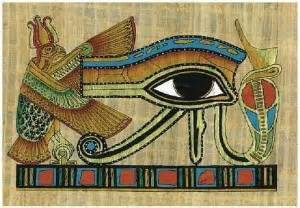 upon the thought substance of a primitive people. Thales, Pythagoras, and Plato in their philosophic wanderings contacted many distant cults and brought back the lore of Egypt and the inscrutable Orient.
upon the thought substance of a primitive people. Thales, Pythagoras, and Plato in their philosophic wanderings contacted many distant cults and brought back the lore of Egypt and the inscrutable Orient.
From indisputable facts such as these it is evident that philosophy emerged from the religious Mysteries of antiquity, not being separated from religion until after the decay of the Mysteries. Hence he who would fathom the depths of philosophic thought must familiarize himself with the teachings of those initiated priests designated as the first custodians of divine revelation. The Mysteries claimed to be the guardians of a transcendental knowledge so profound as to be incomprehensible save to the most exalted intellect and so potent as to be revealed with safety only to those in whom personal ambition was dead and who had consecrated their lives to the unselfish service of humanity. Both the dignity of these sacred institutions and the validity of their claim to possession of Universal Wisdom are attested by the most illustrious philosophers of antiquity, who were themselves initiated into the profundities of the secret doctrine and who bore witness to its efficacy.
[…] The question may legitimately be propounded: If these ancient mystical institutions were of such “great pith and moment,” why is so little information now available concerning them and the arcana they claimed to possess? The answer is simple enough: The Mysteries were secret societies, binding their initiates to inviolable secrecy, and avenging with death the betrayal of their sacred trusts. Although these schools were the true inspiration of the various doctrines promulgated by the ancient philosophers, the fountainhead of those doctrines was never revealed to the profane. Furthermore, in the lapse of time the teachings became so inextricably linked with the names of their disseminators that the actual but recondite source–the Mysteries–came to be wholly ignored.
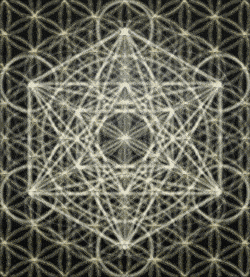 Symbolism is the language of the Mysteries; in fact it is the language not only of mysticism and philosophy but of all Nature, for every law and power active in universal procedure is manifested to the limited sense perceptions of man through the medium of symbol. Every form existing in the diversified sphere of being is symbolic of the divine activity by which it is produced. By symbols men have ever sought to communicate to each other those thoughts which transcend the limitations of language. Rejecting man-conceived dialects as inadequate and unworthy to perpetuate divine ideas, the Mysteries thus chose symbolism as a far more ingenious and ideal method of preserving their transcendental knowledge. In a single figure a symbol may both reveal and conceal, for to the wise the subject of the symbol is obvious, while to the ignorant the figure remains inscrutable. Hence, he who seeks to unveil the secret doctrine of antiquity must search for that doctrine not upon the open pages of books which might fall into the hands of the unworthy but in the place where it was originally concealed.
Symbolism is the language of the Mysteries; in fact it is the language not only of mysticism and philosophy but of all Nature, for every law and power active in universal procedure is manifested to the limited sense perceptions of man through the medium of symbol. Every form existing in the diversified sphere of being is symbolic of the divine activity by which it is produced. By symbols men have ever sought to communicate to each other those thoughts which transcend the limitations of language. Rejecting man-conceived dialects as inadequate and unworthy to perpetuate divine ideas, the Mysteries thus chose symbolism as a far more ingenious and ideal method of preserving their transcendental knowledge. In a single figure a symbol may both reveal and conceal, for to the wise the subject of the symbol is obvious, while to the ignorant the figure remains inscrutable. Hence, he who seeks to unveil the secret doctrine of antiquity must search for that doctrine not upon the open pages of books which might fall into the hands of the unworthy but in the place where it was originally concealed.
Far-sighted were the initiates of antiquity. They realized that nations come and go, that empires rise and fall, and that the golden ages of art, science, and idealism are succeeded by the dark ages of superstition. With the needs of posterity foremost in mind, the sages of old went to inconceivable extremes to make certain that their knowledge should be preserved. They engraved it upon the face of mountains and concealed it within the measurements of colossal images, each of which was a geometric marvel. Their knowledge of chemistry and mathematics they hid within mythologies which the ignorant would perpetuate, or in the spans and arches of their temples which time has not entirely obliterated. They wrote in characters that neither the vandalism of men nor the ruthlessness of the elements could completely efface, Today men gaze with awe and reverence upon the mighty Memnons standing alone on the sands of Egypt, or upon the strange terraced pyramids of Palanque. Mute testimonies these are of the lost arts and sciences of antiquity; and concealed this wisdom must remain until this race has learned to read the universal language–SYMBOLISM.
[…] lest these secret processes fall into uncultured hands and be perverted, the Great Arcanum was always concealed in symbol or allegory; and those who can today discover its lost keys may open with them a treasure house of philosophic, scientific, and religious truths.
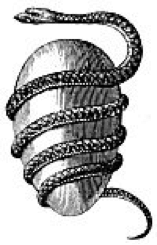 THE ORPHIC EGG.
From Bryant’s An Analysis of Ancient Mythology.
THE ORPHIC EGG.
From Bryant’s An Analysis of Ancient Mythology.
The ancient symbol of the Orphic Mysteries was the serpent-entwined egg, which signified Cosmos as encircled by the fiery Creative Spirit. The egg also represents the soul of the philosopher; the serpent, the Mysteries. At the time of initiation the shell is broken and man emerges from the embryonic state of physical existence wherein he had remained through the fetal period of philosophic regeneration.
[…] There are, however, but few mature minds in the world; and thus it was that the philosophic-religious doctrines of the pagans were divided to meet the needs of these two fundamental groups of human intellect–one philosophic, the other incapable of appreciating the deeper mysteries of life. To the discerning few were revealed the esoteric, or spiritual, teachings, while the unqualified many received only the literal, or exoteric, interpretations. In order to make simple the great truths of Nature and the abstract principles of natural law, the vital forces of the universe were personified, becoming the gods and goddesses of the ancient mythologies. While the ignorant multitudes brought their offerings to the altars of Priapus and Pan (deities representing the procreative energies), the wise recognized in these marble statues only symbolic concretions of great abstract truths.
In all cities of the ancient world were temples for public worship and offering. In every community also were philosophers and mystics, deeply versed in Nature’s lore. These individuals were usually banded together, forming seclusive philosophic and religious schools. The more important of these groups were known as the Mysteries. Many of the great minds of antiquity were initiated into these secret fraternities by strange and mysterious rites, some of which were extremely cruel. Alexander Wilder defines the Mysteries as “Sacred dramas performed at stated periods. The most celebrated were those of Isis, Sabazius, Cybele, and Eleusis.” After being admitted, the initiates were instructed in the secret wisdom which had been preserved for ages. Plato, an initiate of one of these sacred orders, was severely criticized because in his writings he revealed to the public many of the secret philosophic principles of the Mysteries.
 Every pagan nation had (and has) not only its state religion, but another into which the philosophic elect alone have gained entrance. Many of these ancient cults vanished from the earth without revealing their secrets, but a few have survived the test of ages and their mysterious symbols are still preserved. Much of the ritualism of Freemasonry is based on the trials to which candidates were subjected by the ancient hierophants before the keys of wisdom were entrusted to them.
Every pagan nation had (and has) not only its state religion, but another into which the philosophic elect alone have gained entrance. Many of these ancient cults vanished from the earth without revealing their secrets, but a few have survived the test of ages and their mysterious symbols are still preserved. Much of the ritualism of Freemasonry is based on the trials to which candidates were subjected by the ancient hierophants before the keys of wisdom were entrusted to them.
[…] “It appears that all the perfection of civilization, and all the advancement made in philosophy, science, and art among the ancients are due to those institutions which, under the veil of mystery, sought to illustrate the sublimest truths of religion, morality, and virtue, and impress them on the hearts of their disciples. […] Their chief object was to teach the doctrine of one God, the resurrection of man to eternal life, the dignity of the human soul, and to lead the people to see the shadow of the deity, in the beauty, magnificence, and splendor of the universe.”
With the decline of virtue, which has preceded the destruction of every nation of history, the Mysteries became perverted. Sorcery took the place of the divine magic. Indescribable practices (such as the Bacchanalia) were introduced, and perversion ruled supreme; for no institution can be any better than the members of which it is composed. In despair, the few who were true sought to preserve the secret doctrines from oblivion. In some cases they succeeded, but more often the arcanum was lost and only the empty shell of the Mysteries remained.
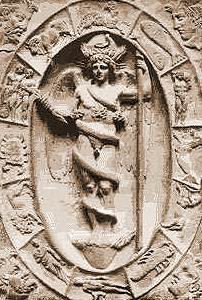 […] The ideals of early Christianity were based upon the high moral standards of the pagan Mysteries, and the first Christians who met under the city of Rome used as their places of worship the subterranean temples of Mithras, from whose cult has been borrowed much of the sacerdotalism of the modem church.
[…] The ideals of early Christianity were based upon the high moral standards of the pagan Mysteries, and the first Christians who met under the city of Rome used as their places of worship the subterranean temples of Mithras, from whose cult has been borrowed much of the sacerdotalism of the modem church.
The ancient philosophers believed that no man could live intelligently who did not have a fundamental knowledge of Nature and her laws. Before man can obey, he must understand, and the Mysteries were devoted to instructing man concerning the operation of divine law in the terrestrial sphere. Few of the early cults actually worshiped anthropomorphic deities, although their symbolism might lead one to believe they did. They were moralistic rather than religionistic; philosophic rather than theologic. They taught man to use his faculties more intelligently, to be patient in the face of adversity, to be courageous when confronted by danger, to be true in the midst of temptation, and, most of all, to view a worthy life as the most acceptable sacrifice to God, and his body as an altar sacred to the Deity.
Sun worship played an important part in nearly all the early pagan Mysteries. This indicates the probability of their Atlantean origin, for the people of Atlantis were sun worshipers. The Solar Deity was usually personified as a beautiful youth, with long golden hair to symbolize the rays of the sun. This golden Sun God was slain by wicked ruffians, who personified the evil principle of the universe. 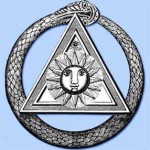 By means of certain rituals and ceremonies, symbolic of purification and regeneration, this wonderful God of Good was brought back to life and became the Savior of His people. The secret processes whereby He was resurrected symbolized those cultures by means of which man is able to overcome his lower nature, master his appetites, and give expression to the higher side of himself. The Mysteries were organized for the purpose of assisting the struggling human creature to reawaken the spiritual powers which, surrounded by the flaming ring of lust and degeneracy, lay asleep within his soul. In other words, man was offered a way by which he could regain his lost estate. (See Wagner’s Siegfried.)
By means of certain rituals and ceremonies, symbolic of purification and regeneration, this wonderful God of Good was brought back to life and became the Savior of His people. The secret processes whereby He was resurrected symbolized those cultures by means of which man is able to overcome his lower nature, master his appetites, and give expression to the higher side of himself. The Mysteries were organized for the purpose of assisting the struggling human creature to reawaken the spiritual powers which, surrounded by the flaming ring of lust and degeneracy, lay asleep within his soul. In other words, man was offered a way by which he could regain his lost estate. (See Wagner’s Siegfried.)
In the ancient world, nearly all the secret societies were philosophic and religious. During the mediæval centuries, they were chiefly religious and political, although a few philosophic schools remained. In modern times, secret societies, in the Occidental countries, are largely political or fraternal, although in a few of them, as in Masonry [depending on the true morality of its members and lodges], the ancient religious and philosophic principles still survive.
Space prohibits a detailed discussion of the secret schools. There were literally scores of these ancient cults, with branches in all parts of the Eastern and Western worlds. Some, such as those of Pythagoras and the Hermetists, show a decided Oriental influence, while the Rosicrucians, according to their own proclamations, gained much of their wisdom from Arabian mystics. Although the Mystery schools are usually associated with civilization, there is evidence that the most uncivilized peoples of prehistoric times had a knowledge of them. Natives of distant islands, many in the lowest forms of savagery, have mystic rituals and secret practices which, although primitive, are of a decided Masonic tinge.”





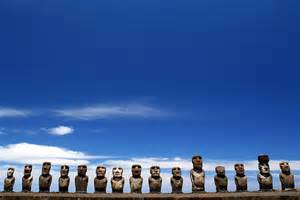

Pingback: A Matrix of the New Culture/Civilization | TPS Blog – English Area
Pingback: Misteri, Simbolismo, Filosofia e Religione - TPS Blog - Area italiana